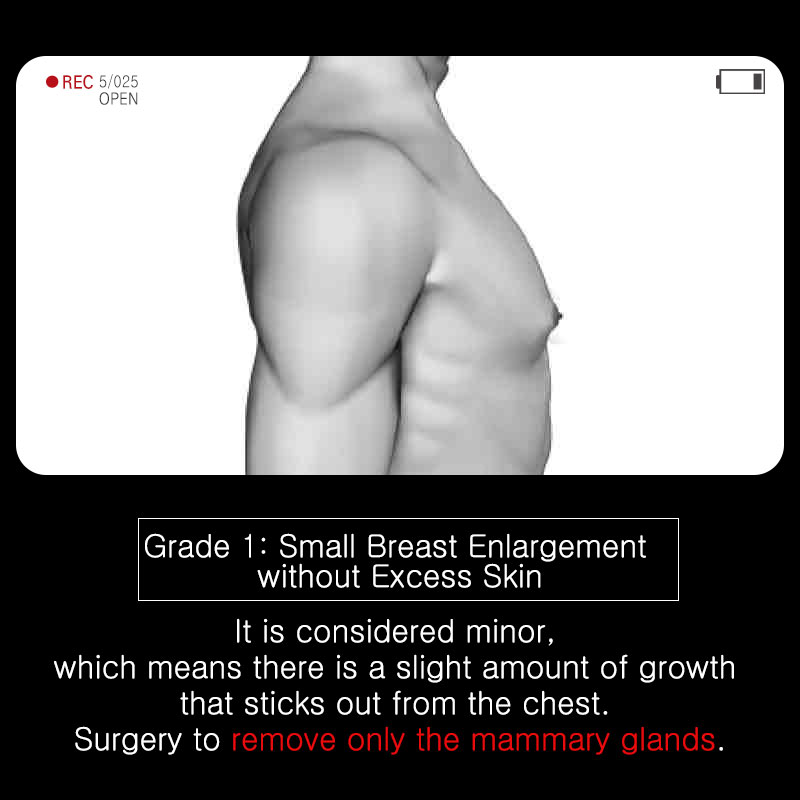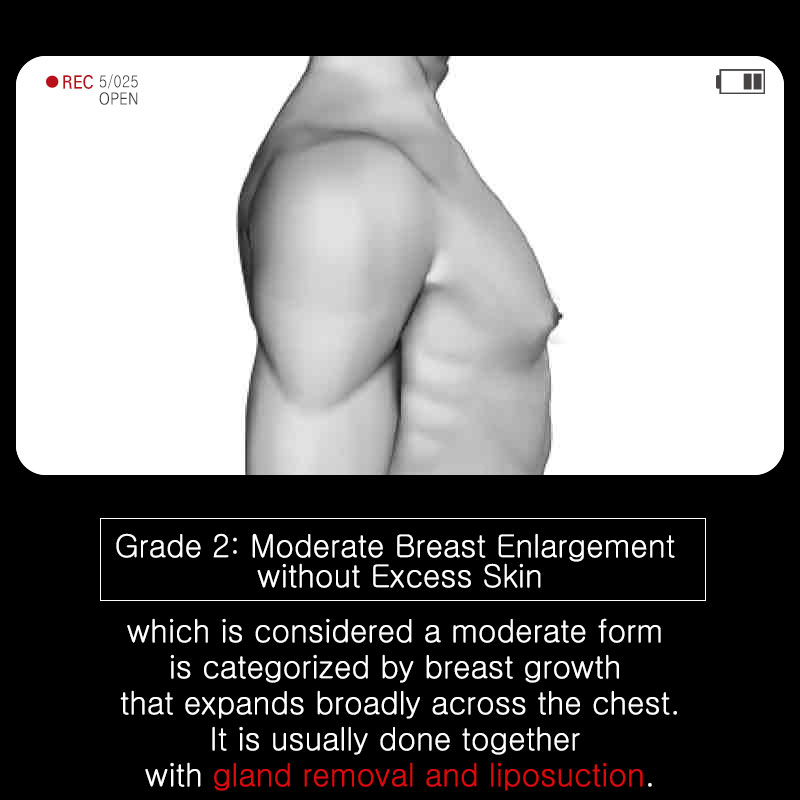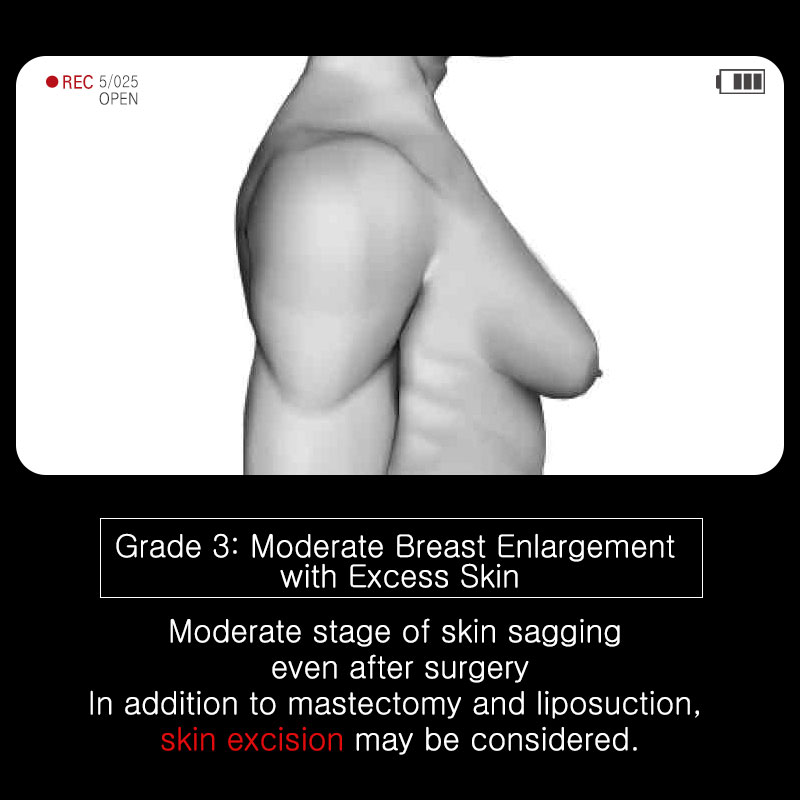
There are several ways to classify gynecomastia.
Depending on whether there is abnormal development of mammary glands,
it can be divided into true gynecomastia and pseudogynecomastia.
It usually follows the 4-step classification of ASPS,
which is basically classified according to how to solve it surgically.

Grade 1 is the appearance of gynecomastia for the first time in adolescence or adulthood gynecomastia caused by drugs.
There is no fat accumulation near the mammary glands, only the mammary glands grow abnormally, and the nipple and areola protrude.
Surgery only requires removal of the mammary gland under the nipple under minimal incision.

Grade 2 is the most common.
The development of the mammary glands naturally leads to the accumulation of fat around the mammary glands.
The breast itself becomes similar to that of a woman.
If only the mammary gland is removed from this grade, it is not cosmetically good.
In addition to liposuction,
the mammary glands should also remove the skin, muscle, and tissue attached to the results after surgery.

Grade 3 is the stage where the skin is sagging.
It occurs when the breasts are large or the skin loses elasticity due to aging.
Those who are in stage 2 will eventually progress to stage 3 as they get older.
In this case, even if the mammary glands and fat under the skin are removed in the grade 2 of surgery, some sagging of the skin occurs.
Those who are concerned about sagging skin inevitably have to undergo surgery to cut off part of the skin.
Often, after the mammary glands and fat are removed,
patients try to increase muscle volume with maximum exercise, and then only the skin is remove later.

Grade 4 is when the skin is severely sagging to the point where the nipple goes below the bottom line of the breast.
In this case, sagging and floppy skin cannot be avoided even after muscle growth and massage after surgery.
Also, the position of the nipple should be raised.
Extensive skin removal is required, and a method called “Ankor Resection” or “Double Incision” is usually performed.
These grade of gynecomastia vary slightly from person to person.
The surgical method should be selected according to the patient’s age, muscle mass, recovery period, lifestyle, and patient’s needs. In this regard,
you will consult with a specialist and make a decision.
